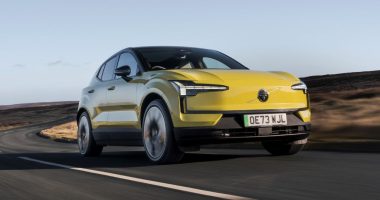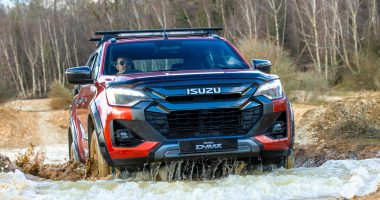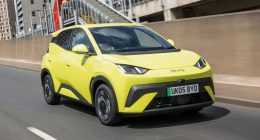Even the trend-setting Mini has to conform to the rules sometimes. It was not always on the cards, but electrification of the British-made hatch was inevitable and in a short time has become an important fixture in the range. To copper-fasten its appeal, it has been treated to a raft of cosmetic up-dates.
Table of Contents
MINI HAS GONE ELECTRIC?
Yep – but not for the first time. Mini dipped its toe into the electric pond some thirteen years ago with the Mini E, but the tech was expensive not to mention before its time. That probably explains why only 600 were built and every single one was leased. Fast forward to 2020 – the year the Mini Electric arrived – and they quickly accounted for 12% of Mini sales. Last year, it was nearly a fifth. If trends are to be believed that number is set to carry on in an upward trajectory. At the heart of this e-hatch is a ‘T’-shaped battery pack. Rated at 32.6kWh, range is quoted at 145-miles, although 100 miles is more plausible. For most owners, that should still be ample for everyday journeys.
WHAT ARE THE MAIN DIFFERENCES?
On the surface – quite literally – not much, but more on that shortly. From a usability point-of-view, every Mini Electric uses the same front-mounted e-motor for strong performance. 181bhp guarantees tyre squealing acceleration and judging by our time behind the wheel the quoted 0-62mph time of 7.3 seconds certainly cannot be argued with. When the time arrives to charge – something you could end up doing more often than you’d probably like despite the added benefit of adaptable regenerative braking – an 80% charge takes 35 minutes when linked up to a 50kW DC rapid charger. That rises to two-and-a-half hours if using 11.2kW AC chargers – like a home wall box – or the better part of twelve hours if your only source of power is a three-pin domestic socket.
HOW DOES THE RANGE SHAPE UP?
The core derivates are ‘Level 1’, ‘2’ and ‘3’. And until all 300 units find new homes, they continue to be joined by an ‘Electric Collection’ model. Based on ‘3’ grade, it is available in either ‘Island Blue’ or ‘Rooftop Grey’ hues. The predicted sweet spot in the range is ‘2’, however but being a Mini there is still the ability to throw in a few extras; we particularly like the three-pin plug socket-inspired alloys. Aside from that, this specific Mini doesn’t immediately strike you as being electric. True, there is no exhaust pipe and the air vent on the bonnet is fake as there is no engine to cool, but you need to look really closely to spot either. The grille is wider and taller than before as part of the faceligt process and on our test car it was framed in a chrome surround – a material that is repeated on the headlights and door handles. Other electric markers include yellow ‘S’ badging on the tailgate and front flanks as well as the Mini Electric logo that’s stamped into the charging cap. If you don’t like the thought of bright yellow, you can rest easy knowing that it’s not obligatory.
ANY CHANGES ON THE INSIDE?
The cabin is going to be a familiar place to existing Mini owners. No bad thing, really, because Mini bosses understand how that sense of familiarity could help win over EV sceptics. Except for some new buttons on the thick-rimmed leather steering wheel, not to mention yellow detailing on the start/stop toggle button and gear shifter, the really important changes have been made to the multimedia system that’s housed within the backlit circular centrepiece. Chief amongst these is the ability for users to request information on nearby charging stations. Carried over untouched is the steering column-mounted digital instrument cluster. At 5-inches it isn’t the biggest in this class. Still, figuring out exactly what’s what, such as the battery’s calculated range to real-time power consumption, is straightforward and requires only a cursory glance. It’s worth staying with the interior for just a second because as any Mini owner will confirm, the hatch is not the roomiest or most versatile. Yet despite the head of the T-shaped battery resting across the rear axle, space for those two passengers travelling in the back is a copycat of the petrol equivalent.
DOES IT DRIVE LIKE A MINI?
Let’s deal with the negatives (no pun intended) first. The Mini Electric is poorly damped over rough surfaces, causing it to crash and bang over lumps and bumps as you try to plot a path around patched up sections of road. The suspension’s stiffness in parallel with the 17-inch wheels culminate in a fidgety ride that can become a bit too much at times. Tyre noise is another red mark against the car’s road manners checklist; being electric there is no engine to mask the sound and it will have you reaching for the stereo’s volume button. On the plus side (sorry!) the same kart-like handling that has made the Mini such a joyous and popular driver’s car remains intact. Head down a B-road and you soon appreciate the sharp turn-in and planted body. The most aggressive energy recovery mode also allows for single-pedal driving.
PROS & CONS
+ Punchy and fun performance
+ Endless personalisation options
+ Trademark looks remain
– Rivals have larger ranges
– Cramped rear, tiny boot
– Firm ride can irritate
MULTIMEDIA: The one area the Mini Electric really needed addressing was the infotainment system. The software created for facelifted cars is modelled on smartphone devices and you sense as much as the graphics are bolder and the all-round user experience is a vast improvement on before. Android users will be disappointed to learn their smartphone cannot be linked up to it, though.
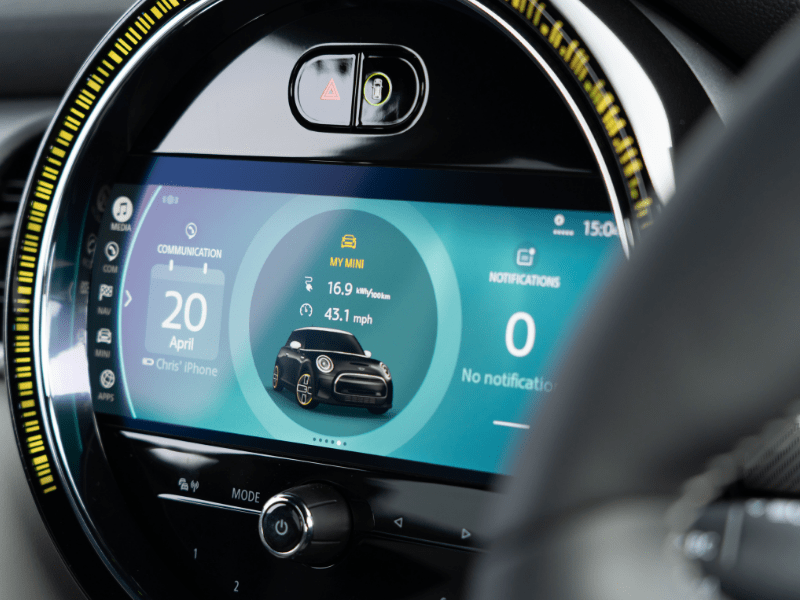
STYLING: A body-coloured grille and the introduction of vents for the brakes where the fog lights were previously found are the most obvious changes at the front, while the Union Jack tail-lights remain at the back. Five body colours and three mirror cap hues can be requested on ‘Level 2’ cars, with personalisation extending to five wheel designs. Yellow details and ‘e’ badging are also unique.

INTERIOR: Ambient lighting and a rear-view camera are among the niceties that come as standard on ‘Level 2’ cars, with a heated steering wheel (£250), active cruise control (£300) and privacy glass for the rear windows (£250) some of the options that can be requested. Build is solid and quality is by and large very good but some aspects such as the steering wheel controls look – and are – cheap.
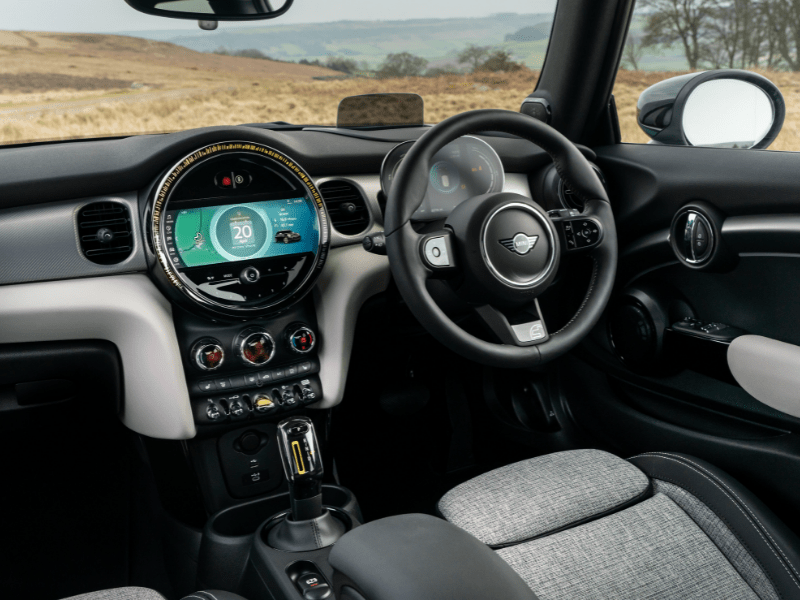
PRACTICALITY: Due to its pint-sized proportions, the Mini Electric is a strict four-seater. Room in the back is at a premium, and taller passengers are going to struggle to get comfortable. Access to the second row of chairs isn’t easy, either, but shoulder room and head room are both fine. 211-litre boot is dinky but useable and has a compartment under the floor to store charge cables.
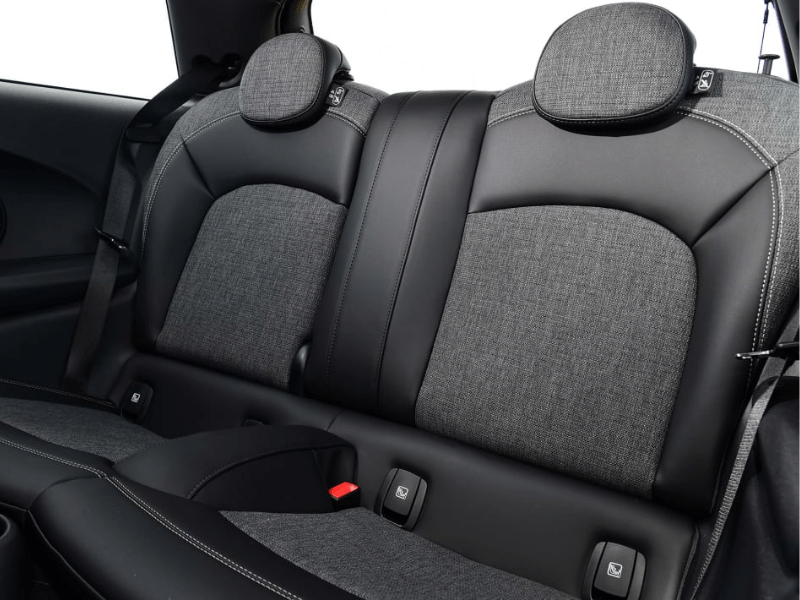
SPECIFICATION
Price: £31,525 (as tested)
Engine/battery: One e-motor/32.6kWh
Power/torque: 181bhp/199lb ft
Transmission: Single-speed automatic, front-wheel-drive
0-62mph: 7.3 seconds
Top speed: 93mph
Range: 145-miles


